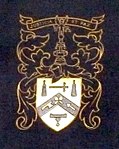St Mary Moorfields

St Mary Moorfields is a Roman Catholic church in Eldon Street near Moorgate, on a site previously known as Moorfields. It is the only Catholic church in the City of London. Prior to 1994, the church was designated as being in the Borough of Hackney, such that there were no Catholic churches in the City.The present building, located at 4–5 Eldon Street, was opened in 1903, after the previous building had been demolished in 1899. However, the foundation had a long history prior to this. A chapel was opened in 1686, but was suspended in 1689, in the aftermath of the Revolution of 1688. The church serves as a hub for evangelism, especially directed at young people who work in the Financial District environs (City of London). The church is affiliated with the St Francis of Assisi Ramblers and also hosts monthly Opus Dei meetings.
Excerpt from the Wikipedia article St Mary Moorfields (License: CC BY-SA 3.0, Authors, Images).St Mary Moorfields
Eldon Street, City of London
Geographical coordinates (GPS) Address External links Nearby Places Show on map
Geographical coordinates (GPS)
| Latitude | Longitude |
|---|---|
| N 51.518788888889 ° | E -0.085713888888889 ° |
Address
Catholic Church of St Mary, Moorfields
Eldon Street 4-5
EC2M 7LS City of London
England, United Kingdom
Open on Google Maps










